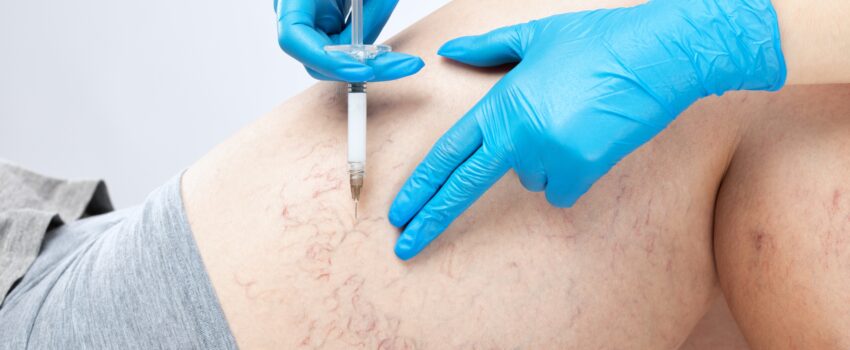Living with a vein condition can often be burdensome and overwhelming, as can choosing the right treatment to reduce symptoms and make veins less noticeable.
Sclerotherapy is one of the many treatments for vein conditions, including varicose veins, spider veins, and hand veins.
Here’s how to determine whether sclerotherapy is the right treatment for a given vein condition and how to contact North Shore Vein Center on Long Island to request a consultation.
What Is Sclerotherapy?
Sclerotherapy is a treatment that can help reduce the appearance of veins nearly anywhere on the body, including on the legs, hands, and face. It is minimally invasive and convenient and produces no downtime.
This varicose vein treatment involves the use of a solution called a sclerosant. The sclerosant is injected into the veins to make them collapse, which forces blood to reroute to nearby healthy veins. Over time, the veins injected with sclerosant gradually fade from view, along with vein symptoms such as pain, burning, and itching.
What Does Sclerotherapy Treat?
Sclerotherapy is commonly used to treat varicose veins, which are large, swollen, twisted, and bulging veins that usually appear in the legs. It may also be used to treat tiny spider veins, as well as visible veins on the hands and face.
This service is typically performed by vein specialists, who can evaluate the appearance and severity of veins to determine whether sclerotherapy can help.
What Are the Best Conditions for Sclerotherapy?
Sclerotherapy may be ideal for anyone who wants to reduce the appearance of unsightly veins. Some veins—such as spider veins and facial veins—are purely aesthetic and do not cause symptoms or increase the risk for other health problems. In these instances, sclerotherapy has the potential to significantly reduce the appearance of veins or make them disappear completely.
Varicose veins, on the other hand, are one of the best indications for sclerotherapy. Varicose veins are linked to deep vein thrombosis—a serious condition that can lead to the formation of blood clots and pulmonary embolism. Varicose veins may also cause a wide range of unpleasant symptoms, including itching, cramping, and heaviness in the legs.
In short, sclerotherapy may be the right option for those who want a convenient and minimally invasive way to reduce both the appearance of veins and symptoms of a vein condition.
What Gives Sclerotherapy the Best Chance for Good Results?
Minimally invasive procedures like sclerotherapy typically come with a reduced risk of complications and less downtime than that produced by surgery and other more invasive treatments.
The needle used in sclerotherapy to inject the sclerosant is incredibly thin and tiny and produces very little pain, which negates the need for anesthesia. In this varicose vein treatment, the problematic veins collapse and are absorbed by the body. The blood that flows through these veins is naturally rerouted to other veins.
Results from sclerotherapy are permanent, though it may take several months for veins to disappear completely as the body heals itself naturally and absorbs the veins.
Seeking treatment from a vein specialist is a good way to ensure sclerotherapy produces the best possible results. A vein specialist may also discuss alternative interventions such as endovenous closure and ambulatory phlebectomy in cases where veins may respond to these treatments better than sclerotherapy.
North Shore Vein Center on Long Island offers a variety of varicose vein treatment options, including sclerotherapy. Contact North Shore Vein Center today at (516) 869-8346 to request an initial vein consultation and learn more about your treatment options.

